Return to Fall 2015 Biology 461 home page
Recommended
for Lab portion of the course (click on the text image for a direct amazon.com link):
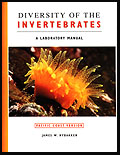 Nybakken,
J.W. 1996. Diversity of Marine Invertebrates: A Laboratory Manual Pacific
Coast Version. McGraw-Hill,
Sunderland, Massachusetts.
Nybakken,
J.W. 1996. Diversity of Marine Invertebrates: A Laboratory Manual Pacific
Coast Version. McGraw-Hill,
Sunderland, Massachusetts.
[Please ensure with seller you are buying
the Pacific Coast Version, although depending on the price the Gulf of Mexico edition might also be worth buying.]
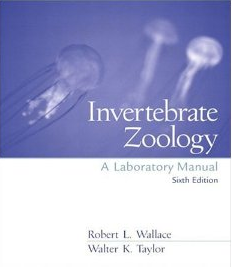 Wallace, Robert L. and Walter K. Taylor. 2002. Invertebrate Zoology: A Laboratory Manual, 6th ed. Benjamin Cummings. [5th ed. is probably fine and amazon.com has multiple copies for < $1]
Wallace, Robert L. and Walter K. Taylor. 2002. Invertebrate Zoology: A Laboratory Manual, 6th ed. Benjamin Cummings. [5th ed. is probably fine and amazon.com has multiple copies for < $1]
Recommended for the lecture and lab portions of the course (click on the text image for a direct amazon.com link):
Any of the following new or
used invertebrate zoology texts can be extremely useful for this course, and they often can be purchased for incredibly inexpensive prices, so that you need to pay little more than the shipping costs. These are all outstanding in their own way.
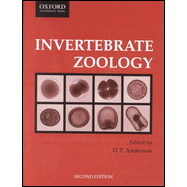 Anderson,
D.T. (ed.) 2002. Invertebrate Zoology, 2nd ed. Oxford
Univ. Press, New York.
Anderson,
D.T. (ed.) 2002. Invertebrate Zoology, 2nd ed. Oxford
Univ. Press, New York.
 Brusca,
Richard C. and Gary J. Brusca. 2003. Invertebrates, Second Edition.
Sinauer
Associations, Sunderland, Massachusetts.
Brusca,
Richard C. and Gary J. Brusca. 2003. Invertebrates, Second Edition.
Sinauer
Associations, Sunderland, Massachusetts.
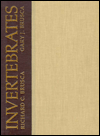 Brusca,
Richard C. and Gary J. Brusca. 1990. Invertebrates.
Brusca,
Richard C. and Gary J. Brusca. 1990. Invertebrates.
 Kozloff,
Eugene. 1990. Invertebrates. Saunders
College Publishing, Philadelphia.
Kozloff,
Eugene. 1990. Invertebrates. Saunders
College Publishing, Philadelphia.
 Meglitsch,
Paul A. and Frederick R. Schram. 1991. Invertebrate zoology, 3rd edition.
Oxford
Univ. Press, New York.
Meglitsch,
Paul A. and Frederick R. Schram. 1991. Invertebrate zoology, 3rd edition.
Oxford
Univ. Press, New York.
 Moore,
Janet
Moore,
Janet
 Pearse,
Vicki, John Pearse, Mildred Buchsbaum and Ralph Buchsbaum. 1987. Living
invertebrates. Blackwell Sci. Pub. and Boxwood
Press.
Pearse,
Vicki, John Pearse, Mildred Buchsbaum and Ralph Buchsbaum. 1987. Living
invertebrates. Blackwell Sci. Pub. and Boxwood
Press.
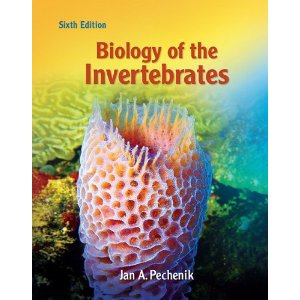 Pechenik,
Jan A. 2009. Biology of the Invertebrates, 6th. ed. McGraw-Hill,
New York.
Pechenik,
Jan A. 2009. Biology of the Invertebrates, 6th. ed. McGraw-Hill,
New York.
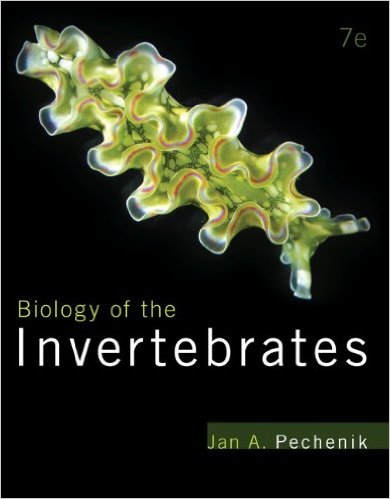 Pechenik,
Jan A. 2015. Biology of the Invertebrates, 7th. ed. (about $200!) McGraw-Hill,
New York.
Pechenik,
Jan A. 2015. Biology of the Invertebrates, 7th. ed. (about $200!) McGraw-Hill,
New York.
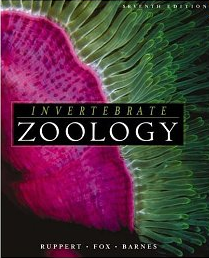 Ruppert,
Edward E., Fox, Richard S., and Robert D. Barnes. 2003. Invertebrate zoology: A functional evolutionary approach, 7th ed.
Saunders
College Publishing, Philadelphia.
Ruppert,
Edward E., Fox, Richard S., and Robert D. Barnes. 2003. Invertebrate zoology: A functional evolutionary approach, 7th ed.
Saunders
College Publishing, Philadelphia.
 Ruppert,
Edward E. and Robert D. Barnes. 1994. Invertebrate zoology, 6th ed. Saunders
College Publishing, Philadelphia.
Ruppert,
Edward E. and Robert D. Barnes. 1994. Invertebrate zoology, 6th ed. Saunders
College Publishing, Philadelphia.
Amazon.com
links: Nybakken, Wallace & Taylor 6th, Wallace & Taylor 5th, Anderson, Brusca
& Brusca, 2nd Ed., Brusca
& Brusca, 1st Ed., Kozloff, Megalitsch
and Schram, Moore,
Pearse
& Buchsbaum, Pechenik, Ruppert et. al., Ruppert
& Barnes
The following discussion was from Fall, 2010. For Fall 2015 I am requiring Pearse and Buchsbaum, which we will supplement with more up-to-date readings for some topics.
Some more details on why you should take my advice and buy one or more of these:
1) I noticed that if you are persistent you can buy a used copy for perhaps $10 to $15 (compared to nearly $100 new for some).
2)
All the books above are very good and cover approximately the same topics,
but all are also out of date with current ideas about metazoan relationships
and methods of classification, except that the newest edition of Pechenik is fairly up to date (but it costs about $200!!).
3)
All will be extremely useful to you in this course, but primarily as a reference
text, rather than something you will read chapter by chapter
4)
Expect that you will also get selected photocopies of selected good dissection guides
or relevant articles or other useful handouts for free throughout the semester.
You will be expected to maintain these in your own three-hole punched notebook
The
last time I taught this course I used many of the following for parts of this course, and you can expect I might use some of these again, although this listing needs to be updated to be more current and I plan to place more emphasis on our required text this semester:
Part 1
Carroll,
S.B., J.K. Grenier, and S.D. Weatherbee, 2001. Figure 4.1, Metazoan phylogeny.
P. 99, in: From DNA to diversity: molecular genetics and the evolution of
animal design.
Blackwell Science, Inc., Malden, Massachusetts.
Pearse,
V., J. Pearse, M. Buchsbaum and R. Buchsbaum. 1987. Preface/ Chapter 1. Seeking
perspective. Pp. 1-8, in: Living Invertebrates. Boxwood Press, Pacific
Grove, California.
Carroll,
S.B., J.K. Grenier, and S.D. Weatherbee, 2001. Chapter 1. A brief history of
animals. Pp. 1-14, in: From DNA to diversity: molecular genetics and the
evolution of animal design. Blackwell Science, Inc., Malden, Massachusetts.
Adoutte,
A., G. Balavoine, N. Lartillot, and R. de Rosa, 1999. Animal evolution: the
end of intermediate taxa? Trends in Genetics 15: 104-109.
Dott,
R.H. Jr., and D.R. Prothero, 1994. Appendix 1 (in part). Pp. A4-A11, in: Evolution
of the Earth,
5th ed. McGraw-Hill, Inc., Sunderland, Massachusetts.
Laverack,
M.S., 1987. Generalities. Pp. 1-10, in: Lecture notes on invertebrate
zoology, 3rd
ed. Blackwell Scientific Pub., Palo Alto, California.
Ruppert,
E.E. and R.D. Barnes. 1994. Inside Cover and Introduction. Pp. i-ii, 2-21, in: Invertebrate
zoology, 6th
ed. Saunders College Publishing, Philadelphia.
Young,
C.M., 2002. A brief history and some fundamentals. Pp. 1-9, in: C.M. Young
(ed.) Atlas of marine invertebrate larvae. Academic Press, San Diego.
General Concepts
Brusca,
R.C. and G.J. Brusca, 1990. Chapter 3. Animal architecture and the bauplan concept. Pp. 43-96, in: Invertebrates. Sinauer Associates, Inc.,
Sunderland, Massachusetts.
Metazoan
Origins and Sponges
Ruppert,
E.E. and R.D. Barnes. 1994. Evolution of metazoans/Epithelial and connective
tissues/Metazoan life cycles and development. Pp. 69-73, in: Invertebrate
zoology, 6th
ed. Saunders College Publishing, Philadelphia.
Phylogenetic
Analysis
Freeman,
S. and J.C. Herron, 2001. Chapter 2 (in part). The evidence for evolution, and
Chapter 13. Reconstructing evolutionary trees. Pp. 21-30, 437-464, in: Evolutionary
analysis.
Prentice-Hall, Inc., Upper Saddle River, New Jersey.
Ruppert,
E.E. and R.D. Barnes. 1994. Homology and analogy/Phylogenetic classification/
Phylogenetic classification of metazoans. Pp. 864-866; 1042-1056, in: Invertebrate
zoology, 6th
ed. Saunders College Publishing, Philadelphia.
Nielsen,
C., 2001. Chapter 1, Introduction, and Chapter 2, Kingdom Animalia (= Metazoa).
Pp. 1-33, in: Animal evolution: interrelationships of the living phyla, 2nd ed. Oxford Univ. Press,
New York.
Tissues,
Guts, and Cnidarians
Ruppert,
E.E. and R.D. Barnes. 1994. Epithelia/ Skeletons/ Movement/ Nervous systems/
Eyes/ Gut cavities/ Embryonic development/ Colonies. Pp. 96-103; 997-1003, in: Invertebrate
zoology, 6th
ed. Saunders College Publishing, Philadelphia.
Bilateria:
General Features and Subgroups
Ruppert,
E.E. and R.D. Barnes. 1994. Bilateral symmetry/ Compartmentation/ Coeloms/
Pseudocoels/ Reproduction/ Cleavage patterns/ Gastrulation/ Protostomes and
Deuterostomes/ Burrowing mechanics/ Deposit feeding/ Respiratory pigments/
Trochophore larvae/ Eyes/ Chemosynthetic symbionts/ Spermatophores/ Larval
settlement/ Segmentation/ Coelomates and acoelomates/ Cuticles. Pp. 175-202,
337-343, 362-365, 500-506, in: Invertebrate zoology, 6th ed. Saunders College
Publishing, Philadelphia.
Nielsen,
C., 2001. Chapter 12, Protostomia, Chapter 13, Spiralia, and Chapter 43,
Deuterostomia sensu lato. Pp. 103-137; 370-384, in: Animal evolution:
interrelationships of the living phyla, 2nd ed. Oxford Univ. Press, New York.
Emlet,
R.B., C.M. Young, and S.B. George, 2002. Phylum Echinodermata: Echinoidea. Pp.
531-551, in: C.M. Young (ed.) Atlas of marine invertebrate larvae. Academic Press, San Diego.
Cambrian
Explosion
Freeman,
S. and J.C. Herron, 2001. Chapter 15. The Cambrian explosion and beyond. Pp.
507-521, in: Evolutionary analysis. Prentice-Hall, Inc., Upper Saddle River, New Jersey.
Briggs,
D.E.G., D.H. Erwin, and F.J. Collier, 1994. History of research/Geological
setting and preservation/The Cambrian radiation/Species recorded from the
Burgess Shale. Pp. 1-50, 217-221, in: The fossils of the Burgess Shale. Smithsonian Institution,
Washington, D.C.
Evolution
and Development ("Evo Devo")
Carroll,
S.B., J.K. Grenier, and S.D. Weatherbee, 2001. Chapter 2, The genetic toolkit
for development, and Chapter 3 (in part), Building animals. Pp. 15-53, in: From
DNA to diversity: molecular genetics and the evolution of animal design. Blackwell Science, Inc.,
Malden, Massachusetts.
Davidson,
E.H., 2001. Chapter 1, Regulatory hardwiring: a brief overview of the genomic
control apparatus and its causal role in development and evolution. Pp. 1-23,
in: Genomic Regulatory Systems. Academic Press, San Diego.
Carroll,
S.B., J.K. Grenier, and S.D. Weatherbee, 2001. Chapter 4, Evolution of the
toolkit. Pp. 97-121, in: From DNA to diversity: molecular genetics and the
evolution of animal design. Blackwell Science, Inc., Malden, Massachusetts.
Further Reading
(Later in Semester – Tentative)
Eernisse,
D.J., J.S. Albert, and F.E. Anderson, 1992. Annelida and arthropoda are not
sister taxa: A phylogenetic analysis of spiralian metazoan morphology. Systematic
Biology 41:
305-330.
Peterson,
K.J., and D.J. Eernisse, 2001. Animal phylogeny and the ancestry of bilaterians:
inferences from morphology and 18S rDNA gene sequences. Evolution and Development 3: 170-205.
Bier,
E., 2000. Chapter 3, Establishing the primary axes of fruit fly embryos, and
Chapter 4, Patterning fly appendages and eyes. Pp. 48-116, in: The coiled
spring: how life begins. Cold Spring Harbor Laboratory Press, Plainview, New York. (pp.
48-116)
Return to Fall 2015 Biology 461 home page